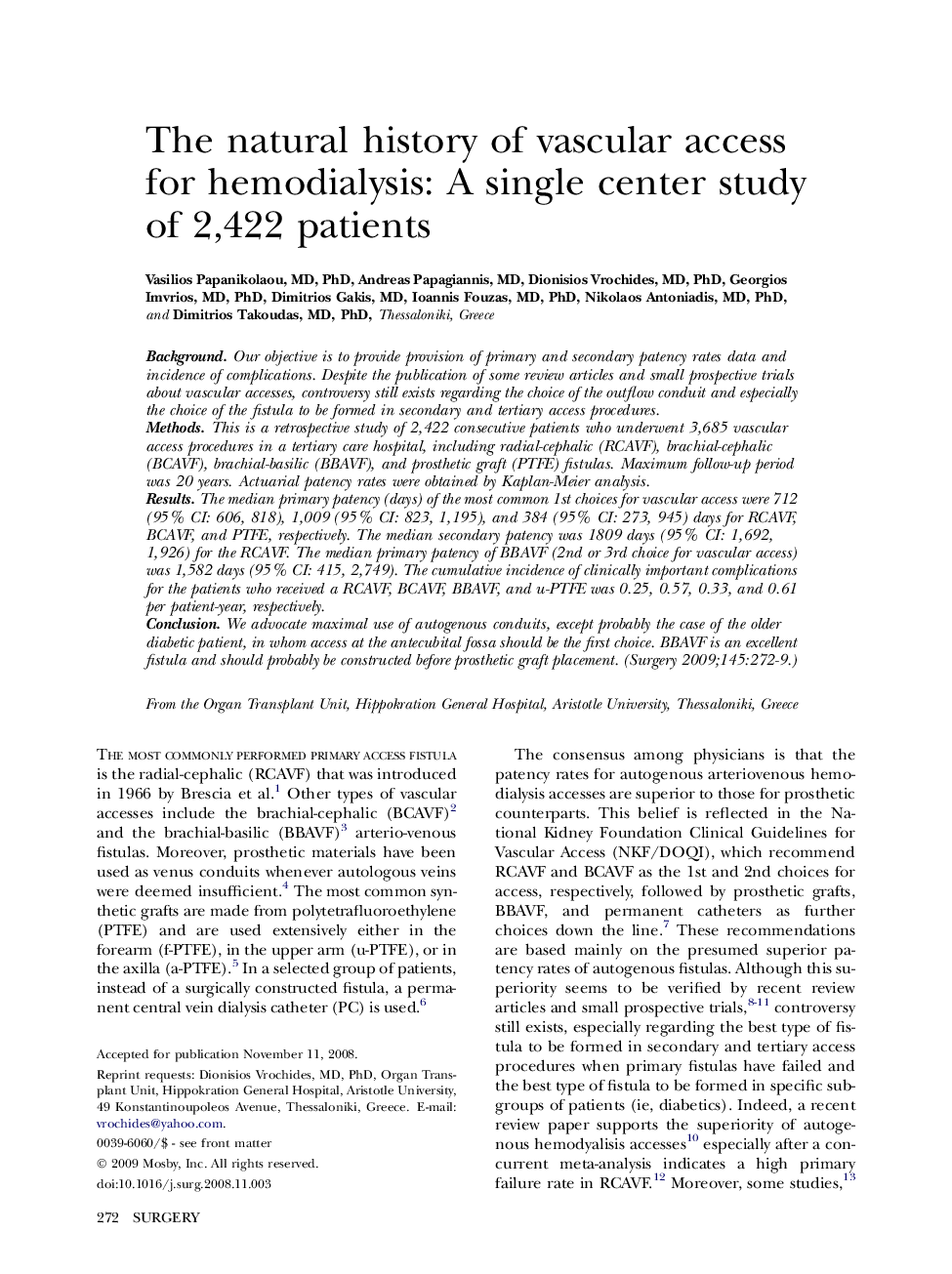| Article ID | Journal | Published Year | Pages | File Type |
|---|---|---|---|---|
| 4309192 | Surgery | 2009 | 8 Pages |
BackgroundOur objective is to provide provision of primary and secondary patency rates data and incidence of complications. Despite the publication of some review articles and small prospective trials about vascular accesses, controversy still exists regarding the choice of the outflow conduit and especially the choice of the fistula to be formed in secondary and tertiary access procedures.MethodsThis is a retrospective study of 2,422 consecutive patients who underwent 3,685 vascular access procedures in a tertiary care hospital, including radial-cephalic (RCAVF), brachial-cephalic (BCAVF), brachial-basilic (BBAVF), and prosthetic graft (PTFE) fistulas. Maximum follow-up period was 20 years. Actuarial patency rates were obtained by Kaplan-Meier analysis.ResultsThe median primary patency (days) of the most common 1st choices for vascular access were 712 (95% CI: 606, 818), 1,009 (95% CI: 823, 1,195), and 384 (95% CI: 273, 945) days for RCAVF, BCAVF, and PTFE, respectively. The median secondary patency was 1809 days (95% CI: 1,692, 1,926) for the RCAVF. The median primary patency of BBAVF (2nd or 3rd choice for vascular access) was 1,582 days (95% CI: 415, 2,749). The cumulative incidence of clinically important complications for the patients who received a RCAVF, BCAVF, BBAVF, and u-PTFE was 0.25, 0.57, 0.33, and 0.61 per patient-year, respectively.ConclusionWe advocate maximal use of autogenous conduits, except probably the case of the older diabetic patient, in whom access at the antecubital fossa should be the first choice. BBAVF is an excellent fistula and should probably be constructed before prosthetic graft placement.
